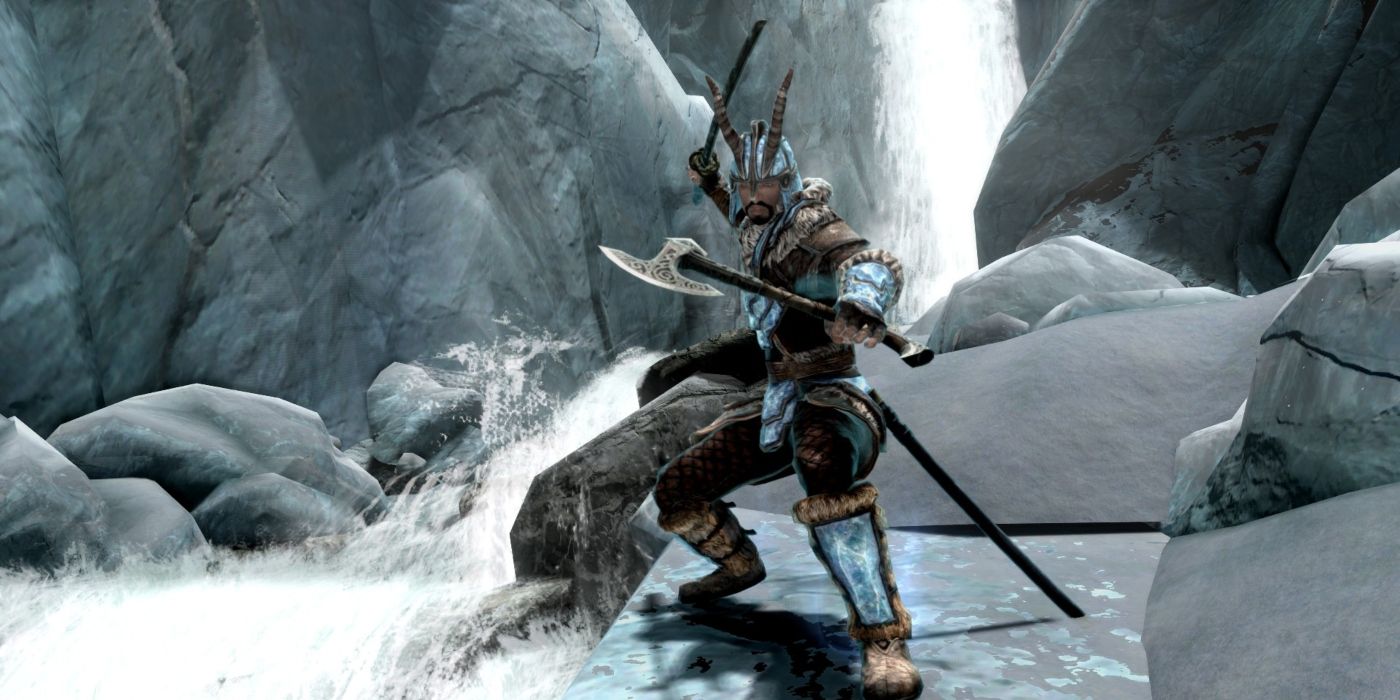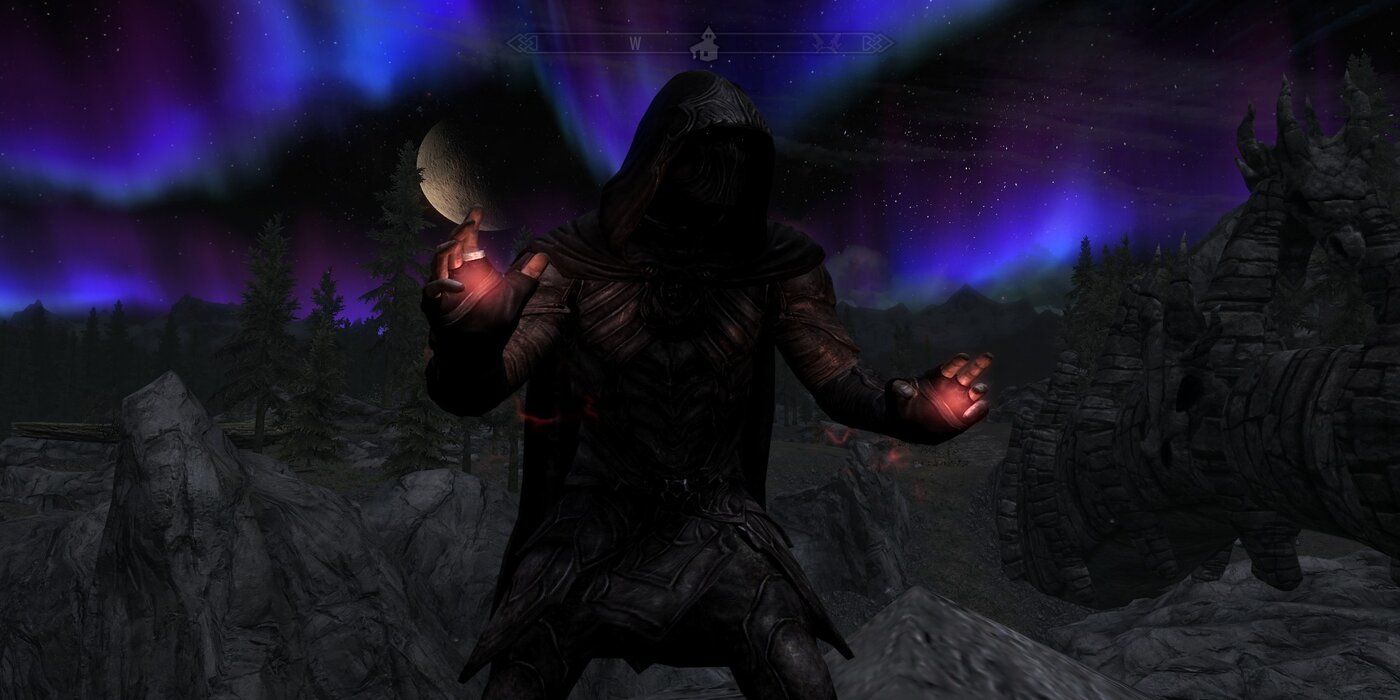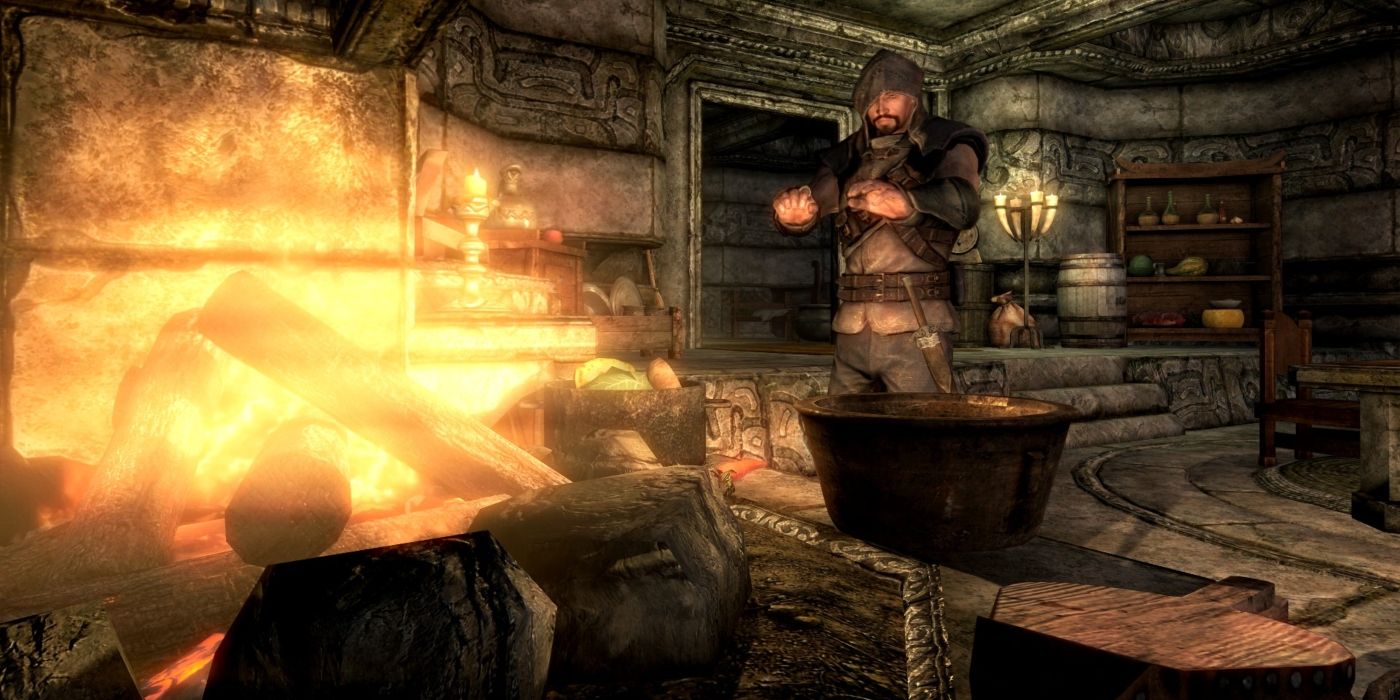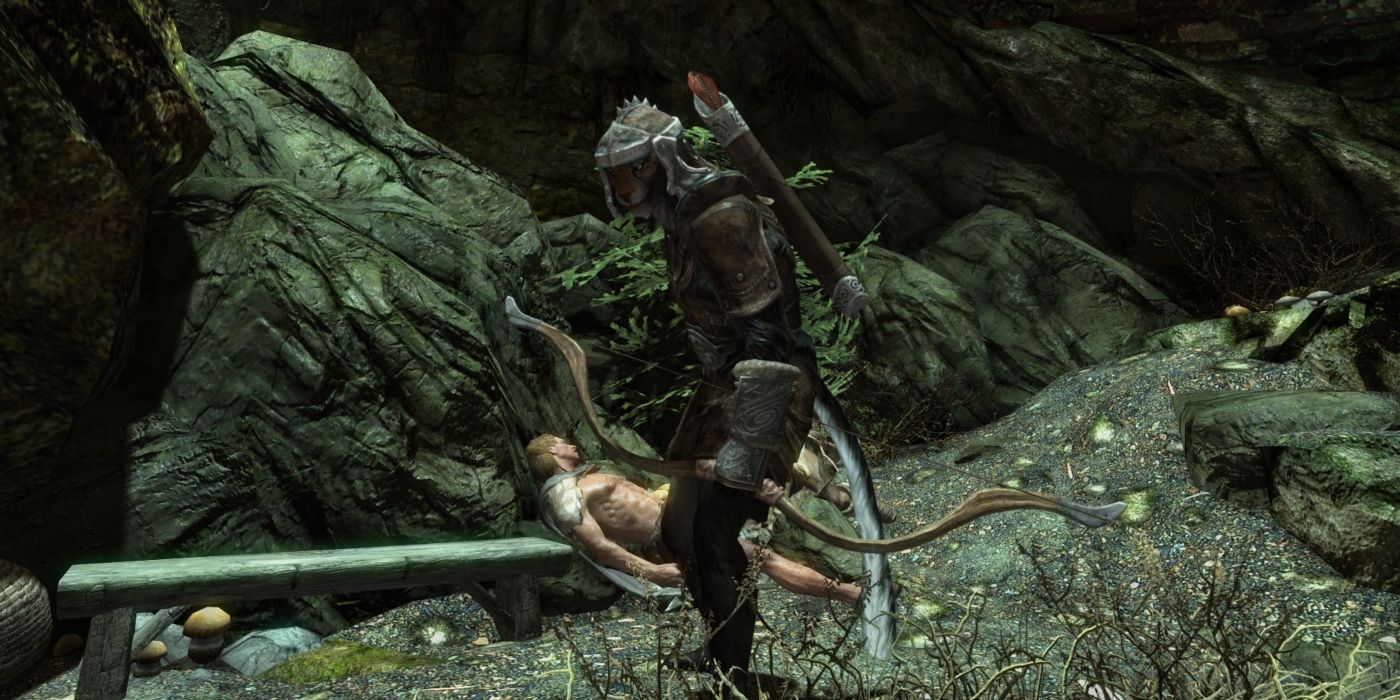Skyrim: Pros & Cons Of Leveling Light Armor Skill Tree
Table of Contents
Investing in Heavy Armor is the quickest way to reach Skyrim’s Armor Rating cap. Compared to the Light Armor skill tree, it does have pros and cons.
You Are Reading :Skyrim Pros & Cons Of Leveling Light Armor Skill Tree

The Light Armor skill tree in The Elder Scrolls V: Skyrim has a focus similar to Heavy Armor, but there are some key differences that give it its own pros and cons. There’s an obvious benefit to keeping a sturdy barrier of iron, ebony, or dragonplate between the Dragonborn and his opponents. Why a player would opt instead for the less protective leather or hide might at first be confusing.
Where Heavy Armor focuses on withstanding damage and tanking, Light Armor is more angled towards mobility and stealth. The Light Armor perks themselves are a mixed bag, with some catered more towards speed and stamina management, and others focusing on negating damage when the Dragonborn is hit. The latter category harkens closer to the pros and cons of Skyrim’s Heavy Armor skill tree.
Of the two categories, 80% of the perks in the Light Armor tree are simply the armor rating of light-class gear. Comparatively, about 60% of Heavy Armor perks pertain to armor rating. This is logical since heavy armor is inherently more durable to begin with; it doesn’t need the benefit of perks to achieve that durability. Light armor does, which explains why Bethesda Game Studios filled Light Armor’s perk tree with more options to boost the player’s armor rating. Players who choose the Light Armor route still need to be able to protect themselves from angry Cave Bears and Draugr Deathlords.
Leveling Skyrim’s Light Armor Skill Tree Has Pros And Cons

There are three types of gear Skyrim’s Dragonborn can wear: Heavy armor, light armor, and robes. Each is loosely tailored to the classic warrior, mage, and rogue archetypes. In this context, light armor is the ideal choice for a rogue playstyle. For players considering the pros and cons of joining the Thieves Guild, an inclination towards light armor may play a part.
Considered a Rogue skill, Light Armor benefits from the Thief Stone whereas Heavy Armor is tied to the Warrior Stone. The game’s Thieves Guild Armor, Nightingale Armor, and Shrouded Armor are all considered light, and are therefore rewarded at various stages of Skyrim’s more rogue-centric quest lines: The Dark Brotherhood and the Thieves Guild. Compared to heavy armor, light armor is better for staying undetected and managing stamina. The aforementioned unique armors are also enchanted to buff other rogue skills such as Lockpicking, Speechcraft, and Pickpocketing.
Enchantments aside, light armor is better for stealth gameplay for two major reasons: First, it synergizes better with Skyrim’s Sneak skill. Secondly, it allows for faster movement, something imperative during the game’s more difficult stealth missions. Moving quietly is also the most efficient way to navigate Skyrim’s many Dwemer ruins. Filled with Spheres and Centurions and patrolled by blind Falmer, these can be more quickly explored with light armor equipped. It is both quieter and faster than doing so with heavy armor.
The Unhindered perk in Light Armor is the same as the Conditioning perk in Heavy Armor. Both perks make their respective armor weightless, no longer slowing down the player or counting towards the carry weight limit. Unhindered is available twenty levels earlier, though. This brings up a key point in the heavy vs light debate: At higher levels, both heavy armor and light armor can be completely weightless, receive a 50% higher armor rating when wearing a full matching set, and, most importantly, can reach the game’s armor cap.

As with most skills in The Elder Scrolls V, Light Armor requires synergy with crafting skills in order to reach its fullest potential. Smithing in Skyrim has its pros and cons, but one of its most useful aspects is that, at high levels, it can enhance heavy or light armor far beyond its usual rating. Skyrim’s armor cap is 567. Contrary to popular belief, light armor, too, can reach this number, but only with the aid of crafting skills. While Alchemy and Enchanting (or even Alteration) can make up the difference, Smithing is the most reliable option.
With all Heavy Armor perks and legendary-smithed stats, a full set of heavy Daedric armor has an armor rating of 700. Dragonplate is only slightly less, with 668. With the armor cap being 567, both numbers are more than enough to handle Skyrim’s toughest bosses. At this point, both of these heavy armor options have an excess armor rating. The extra couple hundred points they provide don’t actually mean anything in the way damage resistance is calculated in Skyrim. It’s literally just a bigger number.
Dragonscale armor, on the other hand, caps off at an armor rating of 581, assuming the player has full perks in Light Armor and the requisite skill levels in Smithing. 581 is still higher than the armor cap of 567, but the player also has all the added benefits of mobility and stamina management that Heavy Armor cannot apply. Glass Armor, topping off at 559, is incredibly close to Skyrim’s armor cap. A Light Armor enchantment can boost it further, and so can a Fortify Light Armor potion. In this way, Alchemy enhances many of Skyrim’s strongest builds.

Which Perks To Choose
- Matching Set: In and of itself, a 25% increase to the player’s overall armor rating is a hugely significant boost to defense. However, it’s when this perk is combined with Custom Fit and five ranks of Agile Defender that the stacking bonuses reach their peak. Together they grant a 150% increase to the Dragonborn’s overall armor rating. This is the equivalent of wearing armor that’s made from materials six times higher in durability.
- Wind Walker: This perk is one of the key elements that separates Light Armor from Heavy Armor in The Elder Scrolls V. There are no Heavy Armor perks that impact the player’s stamina, whereas Light Armor’s Wind Walker allows for 50% faster stamina regeneration in all worn light armor. More stamina means more power attacks with heavier weapons. It also means the Dragonborn can sprint away from encounters more effectively. This versatility makes Wind Walker well worth the skill point, as it affects movement, evasion, and combat skills.
Which Perks Not To Choose
- Deft Movement: Reaching level 100 in Light Armor is no easy task, and Deft Movement is simply not a worthy reward. It’s hard to explain spending a perk point on a skill that only has a 10% chance of working. The only way to justify this would be if the player is being attacked on all sides by many different opponents; at that point the 10% chance has a higher likelihood of occurring. Attacking this many enemies at once is seldom encouraged, however, and doesn’t play to the stealthy strengths typically associated with Light Armor in the first place.
- Unhindered: While not as egregiously useless as Deft Movement, Unhindered isn’t a great perk more because it has little bearing on gameplay. The fact that it enhances base movement speed is handy, but ‘weightless armor’ is only a half-truth. It’s only weightless when the player is wearing it, so it will still take up carry weight if any piece is unequipped. Carry weight is generally not a difficult aspect of Skyrim to manage, either, so this perk is largely just a stepping stone to Wind Walker.
Link Source : https://screenrant.com/skyrim-pros-cons-leveling-light-armor-skill-tree/
